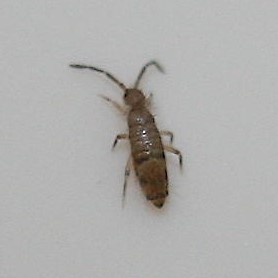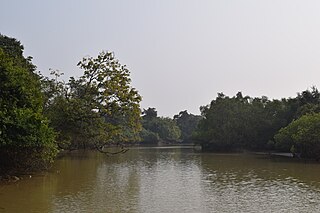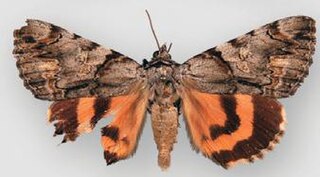
Convolvulaceae, commonly called the bindweeds or morning glories, is a family of about 60 genera and more than 1,650 species. These species are primarily herbaceous vines, but also include trees, shrubs and herbs. The tubers of several species are edible, the best known of which is the sweet potato.

Entomobryidae, sometimes called "slender springtails", is a family of springtails characterised by having an enlarged fourth abdominal segment and a well-developed furcula. Species in this family may be heavily scaled and can be very colourful. The scale-less Entomobryidae are commonly caught in pitfall traps around the planet, and also occur in canopy faunas high up in trees. There are more than 1700 described species in Entomobryidae.

Bhitarkanika Mangroves is a mangrove wetland in Odisha, India, covering an area of 650 km (400 mi) in the Brahmani River and Baitarani River deltas.

La Mia Vita Violenta is the second studio album by American alternative rock band Blonde Redhead. It was released in September 4, 1995 by Smells Like Records.

The Encyclopedia of Life (EOL) is a free, online encyclopedia intended to document all of the 1.9 million living species known to science. It aggregates content to form "pages" for every known species. Content is compiled from existing trusted databases which are curated by experts and it calls on the assistance of non-experts throughout the world. It includes video, sound, images, graphics, information on characteristics, as well as text. In addition, the Encyclopedia incorporates species-related content from the Biodiversity Heritage Library, which digitizes millions of pages of printed literature from the world's major natural history libraries. The BHL digital content is indexed with the names of organisms using taxonomic indexing software developed by the Global Names project. The EOL project was initially backed by a US$50 million funding commitment, led by the MacArthur Foundation and the Sloan Foundation, who provided US$20 million and US$5 million, respectively. The additional US$25 million came from five cornerstone institutions—the Field Museum, Harvard University, the Marine Biological Laboratory, the Missouri Botanical Garden, and the Smithsonian Institution. The project was initially led by Jim Edwards and the development team by David Patterson. Today, participating institutions and individual donors continue to support EOL through financial contributions.

Catocala violenta is a moth of the family Erebidae. It is found from Colorado to Arizona, east to Texas and into Mexico.
Chikita Violenta is a Mexican indie rock band from Mexico City. The band members are Luis Arce, Andrés Velasco, Esteban Suárez and Armando David. They all met in high school between 1994 and 1997. Since the beginning of the band, Chikita Violenta looked for a sound close to the college rock, which can be related to bands such as Pavement, Sonic Youth, Built To Spill and Tortoise.

Bologna Violenta is a one man band musical project founded by Nicola Manzan in 2005.
The Reptile Database is a scientific database that collects taxonomic information on all living reptile species. The database focuses on species and has entries for all currently recognized ~14,000 species and their subspecies, although there is usually a lag time of up to a few months before newly described species become available online. The database collects scientific and common names, synonyms, literature references, distribution information, type information, etymology, and other taxonomically relevant information.

iNaturalist is an American 501(c)(3) nonprofit social network of naturalists, citizen scientists, and biologists built on the concept of mapping and sharing observations of biodiversity across the globe. iNaturalist may be accessed via its website or from its mobile applications. iNaturalist includes an automated species identification tool, and users further assist each other in identifying organisms from photographs and even sound recordings. As of 9 July 2024, iNaturalist users had contributed approximately 197,660,888 observations of plants, animals, fungi, and other organisms worldwide, and 290,007 users were active in the previous 30 days.

Ruth Pinto de Souza was a Brazilian actress.
Pseudosinella spinosa is a species of slender springtails in the family Entomobryidae.
Gnathobleda is a genus of assassin bugs in the family Reduviidae. There are at least four described species in Gnathobleda.
Pseudosinella alba is a species of slender springtail in the family Entomobryidae. It is found in Europe.
Pseudosinella rolfsi is a species of slender springtail in the family Entomobryidae.
Ectecephala laticornis is a species of grass fly in the family Chloropidae.
Opilioacarus texanus is a species of mite in the family Opilioacaridae.
Nausigaster texana is a species of syrphid fly in the family Syrphidae.
The Himalayan long-eared bat, also known as Hodgson's long-eared bat, is a species of bat in the family Vespertilionidae. It is ranges from the Indian subcontinent east to China and south to Vietnam.








